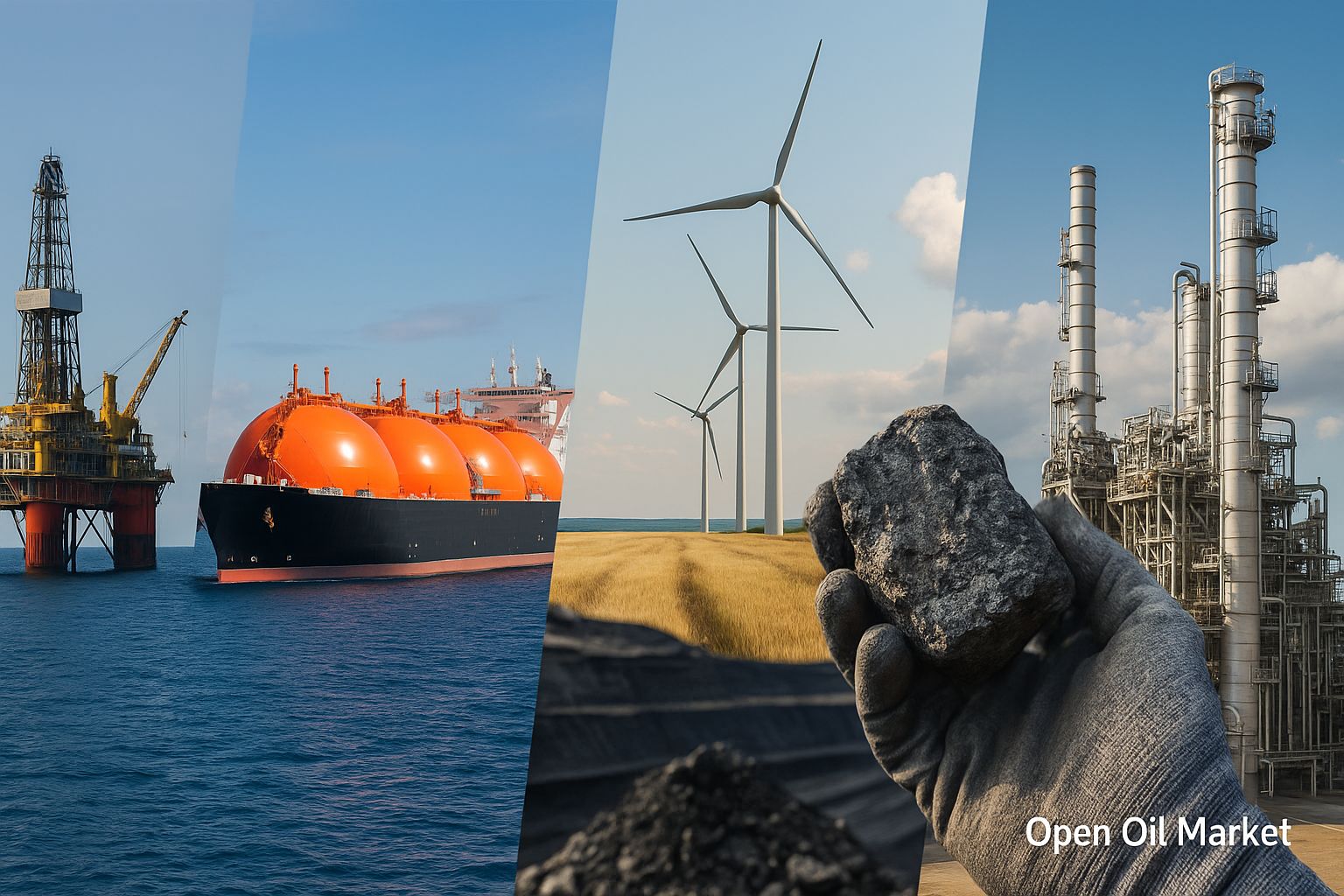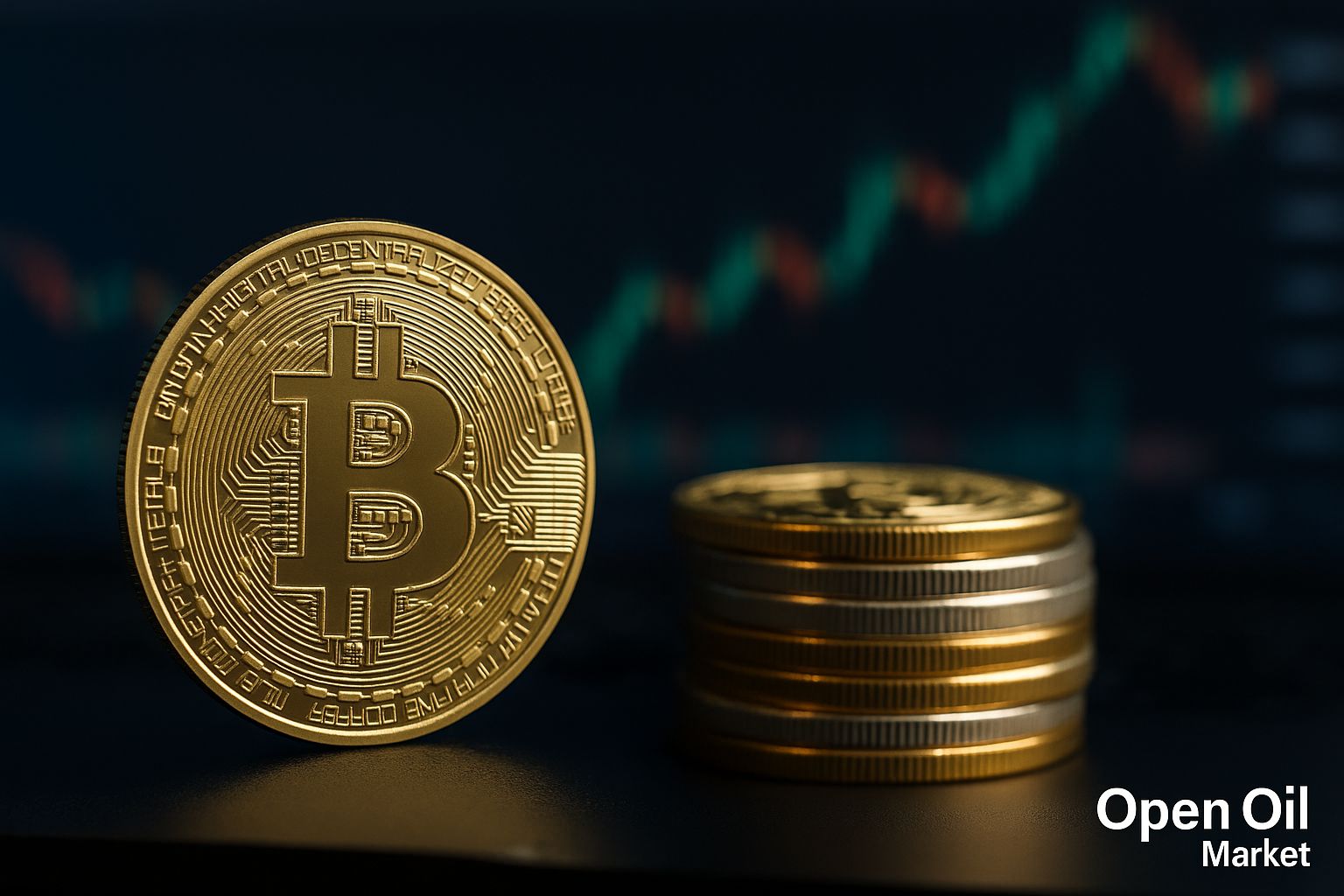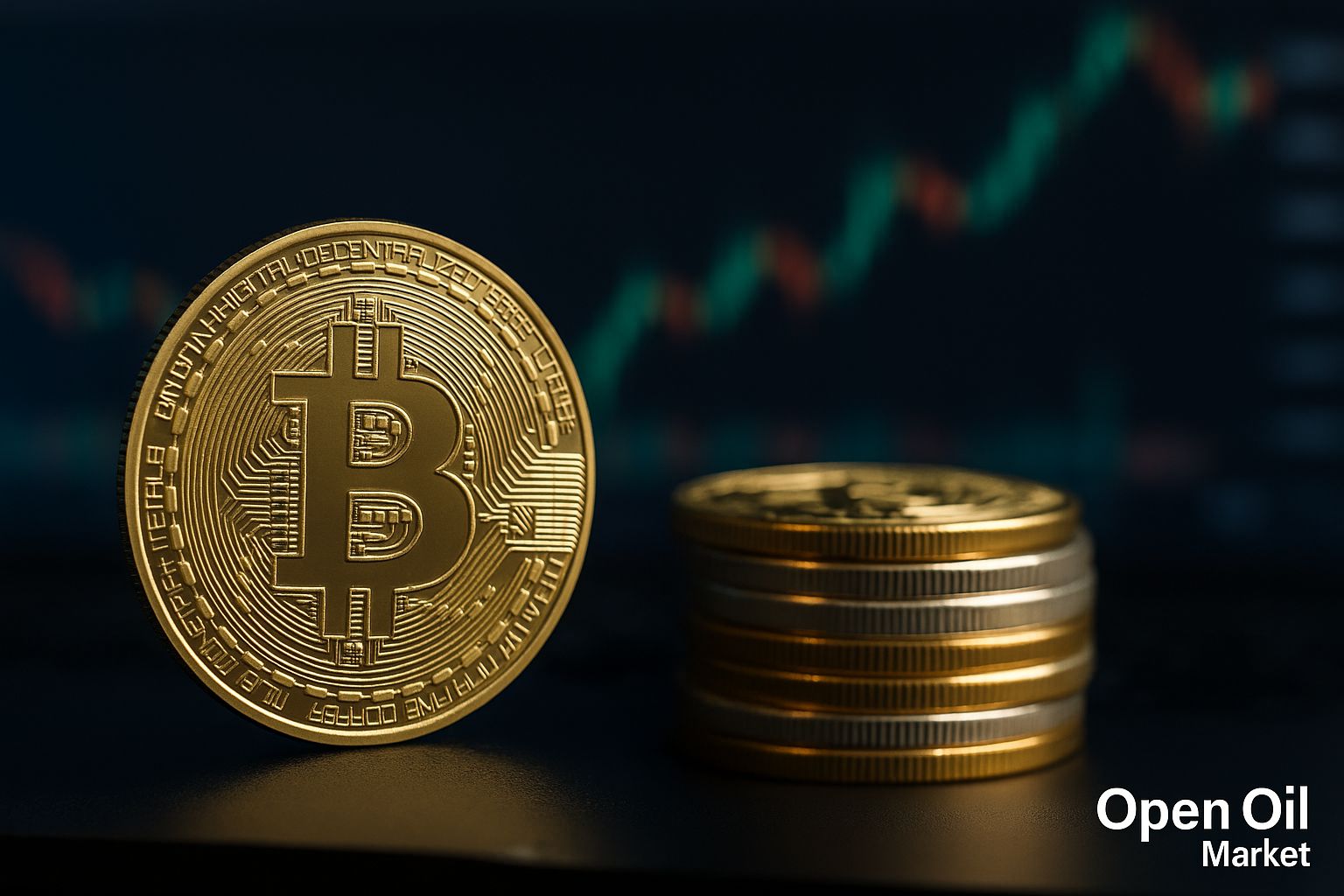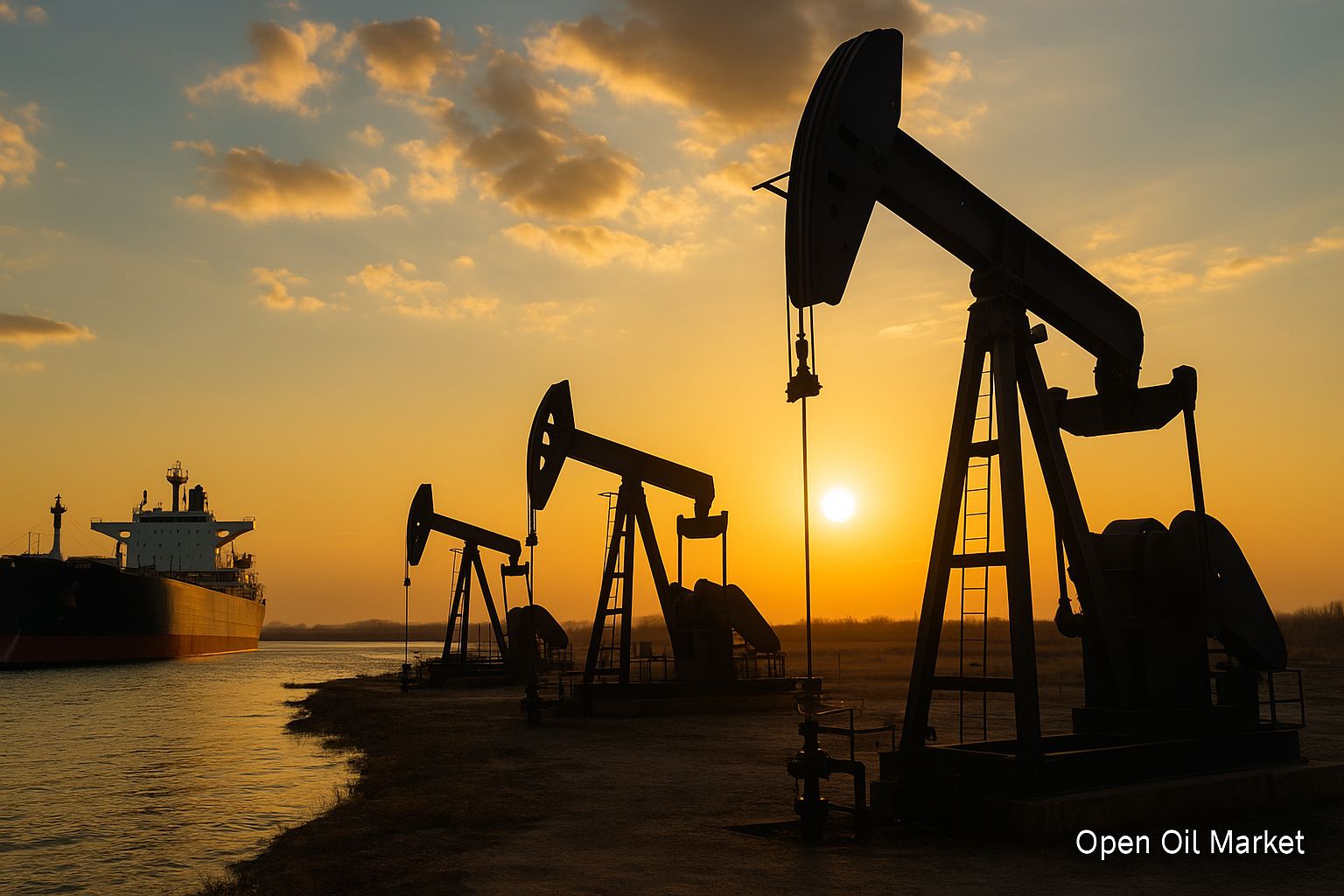
Global and Russian Energy Sector News as of 29 October 2025: Intensification of Sanctions Pressure, Redistribution of Oil Flows, Comfortable Gas Stocks for Winter, Investment Boom in Renewables, and Stability of the Russian Fuel Market.
Relevant developments in the fuel and energy sector as of 29 October 2025 unfold against the backdrop of continuing geopolitical rivalry and a moderately stable raw materials market, drawing interest from investors and market participants. The sanctions confrontation between Russia and the West has not weakened: this week, the United States imposed new sanctions against the largest Russian oil companies, further tightening restrictions on the Russian oil and gas sector. Major consumers are re-evaluating their cooperation with Russia – India, for example, has stated its intention to gradually reduce purchases of Russian oil. Meanwhile, global oil and gas markets are demonstrating relatively calm dynamics: oil prices remain near multi-month lows due to the anticipated oversupply by the end of the year, whilst the gas market enters winter with comfortable fuel stocks in storage, providing a favourable backdrop for consumers. The global energy transition is gaining momentum – investments in renewable energy are hitting record levels, although oil, gas, and coal continue to underpin global energy supply. In Russia, emergency measures aimed at stabilising the domestic fuel market are already allowing for a reduction in shortages and wholesale prices, although conditions in certain regions still require attention. Below is a detailed overview of key news and trends in the oil and gas markets, as well as the situation on the domestic fuel market at the current date.
Oil Market: New Sanctions, Export Redistribution, and Low Prices
Global oil prices remain at depressed levels, close to the lows of recent months. The North Sea Brent blend is trading around $60 per barrel, while West Texas Intermediate (WTI) hovers in the $57–59 range. After a brief rally in September, the market has once again shifted downwards: participants are anticipating a scenario where oil supply will exceed demand in Q4. At the same time, geopolitical tensions are preventing prices from falling significantly below current levels. Several factors are influencing the situation:
- Oversupply and Slowing Demand. OPEC+ continues to steadily increase production, while the US and Brazil have reached record oil output. The rate of global demand growth has slowed: the forecast stands at around +0.7 million barrels per day in 2025 (down from over +2 million in 2023), leading to stockpiling and putting downward pressure on prices.
- Sanctions Pressure and Risks. New Western restrictions are creating uncertainty in oil trading. The US has effectively blocked cooperation with leading Russian oil companies, forcing buyers to restructure their supply chains for Russian crude. At the same time, drone attacks on oil infrastructure in Russia are causing temporary production halts. Any escalation in sanctions or unforeseen events at major fields could curtail supply and trigger a price spike.
Thus, the oil market is balancing between the pressures of fundamental factors and political risks. The surplus supply is keeping prices in check, but the shocks from sanctions and shifts in trading dynamics are preventing prices from falling further. Market participants and oil companies are acting cautiously, considering the scenario of an oil oversupply while also anticipating the possibility of new geopolitical shocks.
Natural Gas: Confident Start to Winter, Low Prices, and Eastern Reorientation
The gas market is presenting a favourable environment for consumers. Europe is entering the heating season with near-record fuel stocks: underground gas storage facilities are over 90% full, providing a robust buffer in case of cold weather. A mild autumn and active summer gas injections have allowed for the accumulation of necessary volumes without emergencies. Consequently, wholesale gas prices in the EU remain low: the TTF index has stabilised at around €30–35 per MWh, significantly lower than the peaks seen in 2022. The risk of a repeat of last year’s gas crisis has been substantially reduced, although much will depend on winter weather and uninterrupted LNG supplies.
- Europe is Prepared for Winter. EU storage facilities are over 90% full, ensuring a solid buffer even in the event of a cold snap. Gas consumption remains moderate: the EU economy is growing slowly, and renewable energy generation was high in the autumn, reducing the use of gas for power generation.
- Record LNG Imports. European countries continue to ramp up liquefied natural gas (LNG) purchases. The weakening demand for LNG in Asia has freed up additional volumes for Europe. Suppliers from the US, Qatar, and other countries have fully utilised their export capacities, delivering fuel to the EU. The high inflow of LNG compensates for the near-total cessation of pipeline gas supplies from Russia and covers the decline in production from North Sea fields. The LNG import keeps the market balanced and prevents sharp price fluctuations.
- Shift to the East. Having lost the European market, Russia is increasing gas exports to Asia. Pipeline flows through the Power of Siberia to China reached record levels in 2025 (nearly 22 billion cubic metres per year). Moscow is also promoting the Power of Siberia 2 project via Mongolia to partially replace lost supplies to Europe by the end of the decade. Additionally, new LNG facilities in Yamal and Sakhalin have provided extra LNG shipments to China, India, and other Asian countries. Despite these steps, total gas exports from Russia remain below pre-sanction levels, as domestic supply and obligations to close allies remain a priority.
Therefore, the global gas sector is entering winter in a relatively balanced state. Europe boasts an unprecedented "safety cushion" in terms of reserves, which significantly reduces the likelihood of price shocks – although they cannot be completely ruled out. Simultaneously, the geography of global gas trading has changed radically: the EU has almost completely abandoned Russian pipeline gas, while Russia has reoriented itself towards Asian markets. Investors and market participants are closely monitoring the commissioning of new LNG capacities and infrastructural agreements, recognising that the global gas landscape continues to evolve rapidly.
Russian Fuel Market: Stabilisation and Price Control
By autumn 2025, the situation in Russia's domestic fuel market has notably stabilised following the crisis at the end of summer. In September, several regions faced acute shortages of gasoline and diesel fuel due to a surge in seasonal demand and reduced supply from refineries (scheduled repairs, accidents, and drone attacks). By mid-October, thanks to emergency measures from the government, the fuel shortage has been significantly reduced. Wholesale prices for gasoline and diesel have retreated from record peaks, and independent fuel stations have resumed normal operations. However, to prevent a new wave of the fuel crisis, the government has extended and expanded several measures:
- Export Restrictions. The complete ban on gasoline exports has been extended until 31 December 2025. Restrictions on diesel fuel exports are also maintained until the end of the year: independent traders are banned from exporting diesel, while oil companies with refineries are permitted only limited exports under state control.
- Support for Refineries. Authorities have maintained payments to refineries to compensate for the price difference between export and domestic fuel prices to stimulate supplies to domestic fuel stations. Oil companies have also been advised to postpone non-critical repairs and increase refining to boost gasoline and diesel output ahead of winter.
- Imports and Prices. To eliminate the shortage, fuel imports have been eased: import tariffs on gasoline and diesel have been zeroed until mid-2026, thus allowing the country to attract resources from abroad if necessary. At the same time, price monitoring has been intensified – the Federal Anti-Monopoly Service has warned major fuel retail networks of gas stations against attempting unjustified price increases. The government is avoiding direct price freezing, relying on market mechanisms (damping, fuel transport subsidies, curbing speculation).
The set of measures taken is already yielding results. By the end of October, the production of gasoline and diesel in Russia has returned to normal levels – aided by the completion of unplanned repairs at refineries and the redirection of some export volumes to the domestic market. Fuel stations in most regions have been sufficiently supplied. The government expects to navigate the winter without serious disruptions to supply, although localized difficulties in remote areas cannot be excluded. Ensuring the internal market remains a priority: export restrictions will only be eased after the country is fully saturated with fuel and the necessary reserves are formed. Even under external pressure and price volatility, domestic fuel supply should remain stable, thus averting a new crisis.




